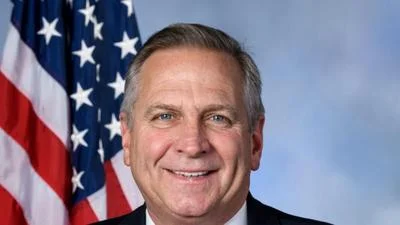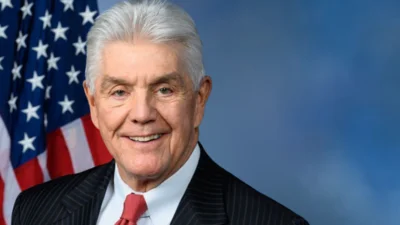Congresswoman Betty McCollum (D-MN), Chair of the Defense Appropriations Subcommittee, delivered the following remarks at the Subcommittee's markup of its fiscal year 2022 bill:
I’d like to begin by thanking everyone involved in getting the Fiscal Year 2022 Defense Appropriations Act to this Subcommittee markup today.
Ranking Member Calvert, thank you for your collaboration through this process. And thank you to all the Members on our Subcommittee for your contributions and your participation in the 18 hearings we held this spring. I am also grateful for the leadership of Chairwoman DeLauro and Ranking Member Granger on the Full Committee in what has been a very challenging year for all of us. Finally, I want to thank the Subcommittee staff for their incredible work on this legislation.
From the pandemic to a late budget request, which always comes later than we’d like in the first year of a new administration - you all performed exceptionally in a very difficult environment. We could not do this work without you.
Members you have the summary of the bill in front of you. Instead of reading a long list of numbers, I’d like to spend my time this morning discussing how we put the bill together.
The Subcommittee recommendation totals $705.9 billion which is essentially equal to the request. I say “essentially" because there are technical scoring differences in OMB and CBO, but the bill is generally consistent with President Biden’s proposed topline.
That topline for the Department of Defense, which includes funding in the Military Construction bill, has garnered a great deal of attention, and frankly scorn, from some members in both parties. I think it would be helpful if we were to put it into context.
In 2021, DoD received a total of $704 billion, which includes base and Overseas Contingency Operations funding. For 2022, President Biden requested an $11 billion increase, all of which is in base funding.
I know that many of my Republican friends believe $11 billion is insufficient. For some, there are questions as to why defense should receive a 1.6% increase when several domestic agencies could see percent changes far larger. I am a strong proponent of the belief that our security is not defined by only the programs funded in the Defense bill. It is greatly impacted by the diplomatic and development initiatives in the State and Foreign Operations bill.
And there is perhaps no greater driver of our security than the health of our economy. Every dollar that we invest on the domestic side to grow the economy and improve the quality of life of hardworking American families makes our country stronger.
Additionally, it is helpful to examine other, recent year-over-year increases.
Last year, in his final budget submission, President Trump requested an $800 million increase for DoD.
That pales in comparison to President Biden’s proposed $11 billion increase, which is 14 times larger than the increase in President Trump’s FY21 request.
At the time, the Department was operating under the same National Defense Strategy that it is today.
The world has changed in the last twelve months. We lost 600,000 fellow Americans to COVID-19, which continues to threaten the security of our nation.
That is why you will see more of an emphasis on topics such as pandemic preparedness, the supply chain for critical materials, and the Defense Production Act.
Threats from China, Russia, and other adversaries persist. The conventional military, nuclear, and cyber challenges posed by our adversaries are part of the reason why we are pursuing a larger increase this year.
Again, I do not begrudge any of my colleagues, particularly those on this Subcommittee who sincerely believe additional resources are necessary.
But I ask that you keep in mind our recent history. Six years ago, DoD received a total of $560 billion. Since 2016, the Department has grown significantly - today we are debating a topline that is $144 billion greater! That is one of the reasons why there are many Democrats who believe that the Department is getting too much.
In my opinion, we have landed on a responsible number that maintains a strong security posture today - while making important investments that will make us even stronger in the years to come.
Now, the Biden budget is not perfect. We scoured the request and made hundreds of reductions where we couldn’t justify directing taxpayer dollars. The bill in front of you also departs from the request in several key areas, including adding an extra Navy destroyer to project greater military strength and zeroing out funding for the Sea Launched Cruise Missile - which I do not believe is a good investment.
And no matter how much our allocation might be, we cannot spend it on ineffective systems. You have all heard me discuss how there is no common definition of legacy systems. To be clear, I do not define legacy by how old something may be.
There are B-52s flying important missions that were built before some members of this Subcommittee were born. What matters is how capable a system is, its functionality, and whether it will help warfighters in a high-end fight.
I had to make tough choices in this bill. Because we must be willing to let go of iconic aircraft or weapons that no longer serve a strategic purpose, or are not survivable in a current or future fight.
We are doing a disservice to our more than two million men and women in uniform if we place our parochial interests above smart security investments for the future.
Broadly speaking, the Department has often been at the forefront of important issues in our society.
As you all know, I strongly believe climate change is an existential threat to our national security.
This isn’t a matter of using the Defense spending bill to enact social policy, combatting climate change is vital to global security because it is a destabilizing force.
There are far too many “black flag" days at bases across the country where troops cannot train or facilities that are not resilient cannot be used due to extreme weather.
And investing in energy efficient systems isn’t only good for the environment, it makes those systems more effective in a high-end fight with adversaries who will target energy supplies.
Due to its sheer size, the Services and the Department will be impacted by widespread cultural issues.
This year, problems with extremism have been highlighted. The report in front of you requires the Department to take further action.
As we end the war in Afghanistan, the bill seeks to resolve two issue the Subcommittee has grappled with for years.
First, it is time we finally close the detention facility at Guantanamo Bay. The bill does not include the General Provisions that had been in recent enacted bills limiting the release of detainees and closure of the facility, and includes a new provision that prohibits funds from being used to operate the facility after Sept. 30, 2022.
Second, all funding in the bill is within base accounts. There are no separate OCO accounts. This will make for a more transparent system and ends the gimmick used by both parties.
On earmarks, our Subcommittee received a small number of requests. Ranking Member Calvert and I decided that we would fund each request that the Department and Services said could be executed at the full amount that was executable.
The result is an equal number of Democratic and Republican projects in the bill, with the total amount provided to Republican projects being greater than Democratic projects.
Finally, one last item I will mention is a General Provision to require all for-profit contractors receiving funds in the bill to pay their employees at least $15 an hour.
A current executive order requires contractors working on government contractors to receive that amount, and the bill takes it a step further by covering all employees of contractors. We simply cannot allow companies to receive hundreds of millions, or even billions, of taxpayer dollars and pay some of their workers far less than a living wage.
Source: U.S. Department of HCA







